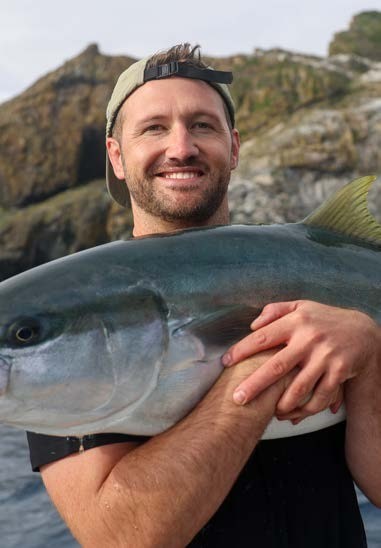From the Helm
LONG LIVE THE KING!
I clearly remember the time and energy I put into landing my first decent kingfish. I was fishing solo in my old man’s dinghy, surface livebaiting a jack mackerel over a shallow reef.
It had been a quiet morning then, suddenly, a pack of kings turned up. In a flurry of swirls and yellow tails, my livie was engulfed and I was hooked; not only to that fish but to kingies for life.
A recent trip to the Three Kings Islands (that you can read about, starting on page 8 of this issue) got me thinking about how we can better manage our kingfish sport fishery. No doubt the food availability, remoteness, and terrain play a big part in the abundance of large kingfish at this offshore archipelago, but could we see similar action along our coast? Perhaps with better management, we would.
Kingies are internationally recognised for their sporting attributes, and New Zealand waters hold 21 of the 22 International Gamefish Association world records for conventional tackle. Since the ’90s, our Quota Management System has essentially managed kingfish as a bycatch-only species for commercial fishers, with far more tonnes allocated to recreational interests. They are truly accessible gamefish that can be caught by landbased, inshore, and offshore anglers alike. They grow quickly and have very high catch-andrelease survival rates. Even Auckland has decent kingfish numbers in summer and autumn… well, lots of small kingfish. They are pretty common in the South Island now, too.
So really, we have most of the key ingredients already, but we’re shooting ourselves in the foot in a few areas that can be easily changed. The current recreational bag limit is three kingfish per angler per day – change it to one, immediately. Don’t get me wrong, I’m partial to some kingfish sashimi but who needs three per day?
Another low-hanging piece of fruit is the minimum size limit. While the minimum legal size for kingfish is 75cm, research suggests the average length of sexual maturity for kingfish is 97cm in females and 83cm in males. That’s quite a gap.
Many clubs, competitions, and charter boats have implemented a voluntary one kingfish per person per day limit, and several clubs have also adopted a minimum size limit of 100cm for kingfish. Why don’t we just codify this in the regs and improve the fishery everywhere?
Tagging studies (with comprehensive data from almost 2,000 recaptures) show that 94% of our kingies are caught close to their release location, even after many years. So, based on the research, if we keep ‘em in the water until they’re over 100cm, they will breed and stick around. There are some more complex issues at play, too. One of these is the number of bronze whaler sharks patrolling many popular reefs. It’s pretty much unanimous that bronzie numbers are increasing, and they have become very adept at latching onto hooked kingfish. I’m not silly enough to propose any ‘old-school’ solutions on the printed page, but I will say that there is no fishing pressure on these toothy thugs whereas our poor kingies are getting crunched from both above and below the waterline.
On a more chirpy note, NZ Fishing News has some exciting news! We’re positioning for the future with a significant investment in digital content for Australasia’s leading recreational fishing website (fishing.net.nz), combined with a premium-quality quarterly publication for our passionate print audience. Moving to a quarterly magazine allows us to deliver the best seasonal content from leading fishing experts in a highquality, coffee table format. The first NZ Fishing News quarterly publication will hit the shelves in August, with the final monthly issue set for May. The team will be in touch with subscribers regarding their options for continued enjoyment of top-quality fishing content.
Tight lines!
Nick Jones Editorial Director
